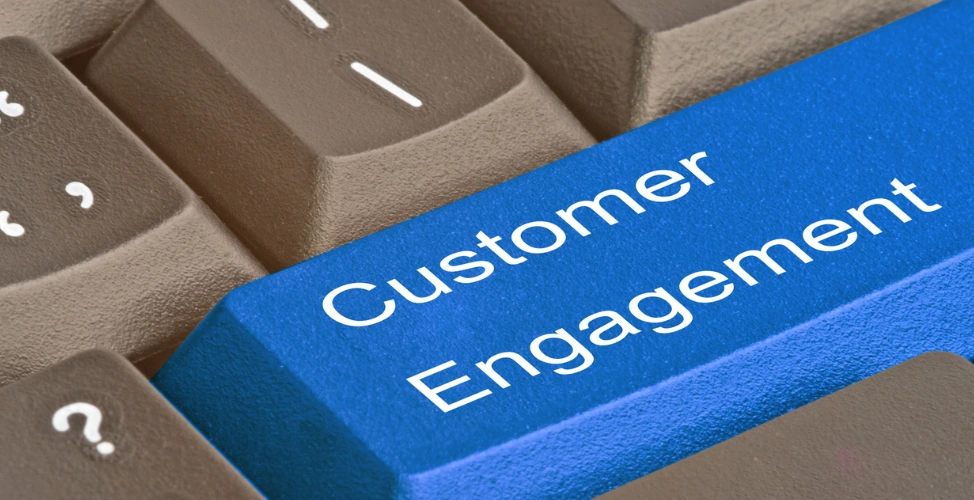How to Develop a Customer Engagement Model That Boosts Retention
Customers crave genuine connections. In a Salesforce study, 80% of buyers say the experience they get is as meaningful as the product itself. Meanwhile, HubSpot research shows that personalization gaps often lead to churn, which is alarming for any brand eager to keep existing clients. This article explores a practical way to build a customer engagement model that benefits loyalty. Let’s see how it can shape strong bonds and increase retention in a straightforward way.

What Is a Customer Engagement Model and Why It Matters
What Is Customer Engagement
Customer engagement is how your audience interacts with your brand across the entire journey: before, during, and after the sale. It’s not about one-off campaigns. It’s about keeping the conversation going. Whether it’s a product update, loyalty offer, or a support reply, each touchpoint shapes how customers feel about your brand.
Is customer engagement the same as customer experience? Not quite.
The two sound similar but they’re not interchangeable. Customer experience covers every impression someone has with your brand, from website speed to product quality. It’s passive. On the other hand, customer engagement is about active involvement. It’s the email they click, the review they write, the social comment they leave. Experience is what happens to the customer. Engagement is what they do with you.
What Is a Customer Engagement Model
A customer engagement model is your plan to keep those interactions meaningful and consistent. It’s the strategy that guides how, when, and where you interact with your audience and how those interactions adapt as people move through the journey. A good model helps you show up with the right message, in the right place, at the right time without feeling robotic or out of sync.
It’s the difference between sending another generic email and sending a timely message that makes someone think, “Wow, they really get me.”
Watch more: Why Digital Customer Experiece Strategy is Essential for Brand Growth
Why Customer Engagement Model is a Business Imperative
Time and trust count in modern commerce. People have plenty of choices at similar price points. That means the moment an experience disappoints them, they might just switch. A strong engagement model holds their attention. It creates a sense of belonging that leads to repeat purchases and brand advocacy.
A separate figure from recent research indicates that 72% of happy customers will share positive brand stories with at least six contacts. That is why continuous engagement stands out. You keep existing clients and attract new ones through word-of-mouth.
Customer Engagement vs Customer Experience
Some confuse these two ideas, but they aren’t the same. Customer experience involves every interaction a person has with your brand, from a quick website visit to product quality. Customer engagement focuses on the connection built across communication channels, loyalty programs, and personal interactions. A top-notch overall experience often grows from a robust engagement model that fosters real-time listening and tailored responses.
Components of an Effective Customer Engagement Model
Personalization and Relevance
Customers want to feel seen. Generic blasts land in spam or get ignored. A more effective approach includes segmented messages based on purchase history, location, or prior interactions. With personalization, a buyer might receive a ‘just for you’ note referencing their past order or a special discount code for their birthday. That extra personal note can nurture trust and keep them coming back.
Omnichannel and Real-Time Communication
Shoppers bounce among social feeds, websites, email, and apps. An omnichannel strategy meets them in their preferred space and time. That could mean using live chat on your site or sending a brief text for urgent updates. Real-time interaction is key. If someone tweets a complaint, a prompt fix can build goodwill. Delayed replies or complicated phone calls push them away.
Feedback Loops and Continuous Improvement
Open lines for feedback let you spot gaps fast. A well-timed post-purchase survey or online poll can reveal what needs changing. Maybe shipping took too long. Maybe the product arrived scuffed. Gathering that information and looping it back into your processes shows you genuinely care. Over time, these small fixes can strengthen brand loyalty and overall reputation.
See more: Choose the Right Digital Transformation Platform for Your Organization
How to Build a Customer Engagement Strategy That Retains
Align Around the Customer Journey
Start by mapping each phase: awareness, consideration, purchase, and loyalty. Then add micro-moments along the way. Maybe a curious shopper lands on your website. Later, they leave an unpurchased item in the cart. An automated cart-reminder email might bring them back. Then, a ‘welcome on board’ message after first purchase can start the long-term relationship. Aligning with each step keeps you in tune with real behavior rather than random guesswork.
Integrate Marketing, Sales, and Service
Companies sometimes treat departments like separate worlds. The buyer’s data gets stored in marketing software, while service has zero clue about prior campaigns. This leads to confusion and repeated questions from your staff. Instead, unify these teams. Let them share logs of calls, emails, or chat transcripts. Then each group sees a holistic history of interactions. That synergy fosters smooth handoffs from one stage to another. The shopper never repeats the same story, saving them time and frustration.
Leverage Technology and Automation
Human touches matter, yet a bit of automation helps handle repetitive tasks. Chatbots can respond fast when people are browsing. Email triggers can go out after certain actions, like sign-ups or cross-sell attempts. However, automation must remain thoughtful. A well-planned approach uses the data to deliver relevant updates. This approach also spares your team from manual drudgery, freeing them to focus on higher-level tasks, such as personal outreach and relationship-building.
How to Measure Customer Engagement Effectively
Key Metrics for Marketing, Sales, and Service
Metrics keep your efforts on track. Here are a few:
- Click-Through Rates (CTR): Useful for tracking whether your marketing captures attention.
- Conversion Rate: Shows how many leads or site visitors turn into buyers.
- Average Response Time: Measures how quickly your team addresses support tickets or comments.
- Customer Satisfaction (CSAT): Reflects how content people feel after an interaction.
Tracking these weekly or monthly paints a clear picture of progress or shortfalls. You might see a dip in CTR on new campaigns, signaling a need for content tweaks. Or a rise in average response time might indicate that your staff is swamped or your system lags.
Analyze Churn and Loyalty Indicators
One big worry is churn. If you see a jump in cancellations or unsubscribes, that’s a red flag. It can point to a pricing issue, product quality concerns, or a messy returns policy. Meanwhile, loyalty indicators like repeat visits, net promoter scores, or program sign-ups show healthy traction. You can split these data points by demographics or location to detect patterns. Then you can decide which group needs specialized outreach to improve retention.
How SmartOSC Can Help You Develop a Winning Customer Engagement Model
At SmartOSC, we don’t just talk about customer engagement models, we build them. For over 18 years, we’ve helped global brands connect the dots between tech, data, and human experience. From digital commerce to digital transformation, our teams deliver tailored solutions that keep customers coming back.
Take Raffles Connect for example. We helped them streamline healthcare journeys by building secure, scalable platforms with automation and real-time tracking. The result? A 30% cut in manual effort and consistently high satisfaction scores.
Or COURTS Singapore, where we unified online and offline systems to support 41% revenue growth and an 11% lift in conversion rate. What tied these wins together wasn’t just the tech. It was the way we designed around each customer’s behavior.
Our strength lies in integration. We bring marketing, sales, service, and operations into one view, using platforms like Salesforce, Magento, and BigCommerce. We also build real-time feedback loops and automated workflows so you can personalize at scale, without drowning in manual tasks.
Need to unify your systems and make engagement feel more personal? We’re ready to help.
Conclusion
A top-tier customer engagement model helps people feel valued, fosters loyalty, and boosts your revenue. By zeroing in on personalization, seamless communication, feedback loops, and the right metrics, you put your brand in a place of true connection. As these pieces come together, retention rises and word-of-mouth grows. Focus on steady improvements, keep lines open, and watch your customer relationships become stronger. If you’re ready to shape such a model for your own brand, consider how proven resources and dedicated partners can smooth the process.
Want to shape a model that fits your goals? Don’t wait. Let’s contact us to get started!


